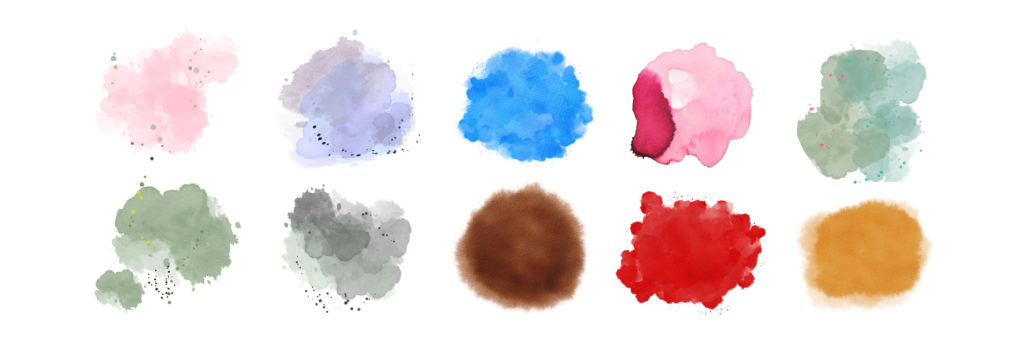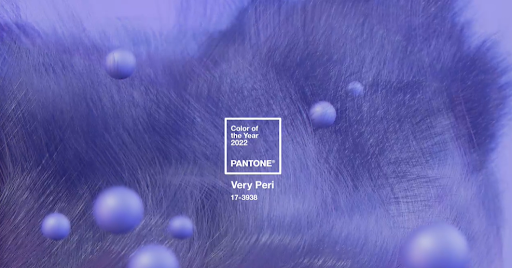
Brand Design – Part 2: Don’t Underestimate the Importance of Color
Choosing the right colors is an essential part of building a solid brand identity. That’s because consumers are 80% more likely to recognize your brand when you use consistent colors. As we discussed in the first part of this series, great design is vital to making an excellent first impression, and the importance of color goes hand in hand with that.
Let’s take a deep dive into color psychology and how that plays into your branding and overall marketing strategy.
Why You Shouldn’t Underestimate the Importance of Color in Brand Design
Did you know that color can affect people’s moods and behavior? It’s no wonder expert marketing strategists know never to neglect the role that color plays in branding and creating a brand identity.
Take top brands like Starbucks and McDonald’s, for example. You associate the color green and red with these colors, respectively. But aside from increasing brand recall, the importance of color extends far beyond the initial visual impression.
Color sets the mood for every interaction your brand has with the consumer. When your audience leaves your brand, do you want them to feel luxurious, quirky, feminine, strong, etc.? That feeling you're trying to capture often begins with the color palette.
Colors Spark Emotions
As we know, color has the power to elicit emotions, and those emotions vary based on a person’s gender, culture, and personal experiences. However, brand experts are more interested in how they can use that color to drive a person’s decision-making because even great website design can’t do that alone.
Red signifies passion and excitement. It also commands attention and makes you feel energized. Blue shows professionalism and stability, and the different tones of blue can also offer different meanings. For example, light blue brings calmness and trustworthiness, whereas dark blue has a feeling of maturity and formality.
That’s why it’s important to pick the right colors to evoke the desired emotions in your target audience.
It’s all about understanding and mastering color psychology when creating a color palette for your brand. A study by Science Daily supports how colors can impact consumer emotions and purchase decisions.
People Identify Brands by Color
The importance of color is also connected to building your brand identity and increasing brand recognition. As mentioned previously, people can identify brands quickly just by the colors they use. So, use brand colors in your logo, website, packaging, advertisements, and marketing materials. Strengthen your brand association and audience awareness by always putting them in front of your audience’s eyes.
People Make Assumptions about Brands Based on Colors
Perception can be the reality when it comes to branding and marketing. Therefore, the colors you choose to represent your brand are critical in how your target market will perceive you.
You must understand that colors can have positive and negative associations. It’s important to build your brand first and pick colors that fit. Consistency in brand colors can reinforce what people think of your brand.
Different Colors Speak to Different People
Don’t disregard the impact of human experience when choosing your brand colors. Colors mean different things to different people. So, think about the type of people you want to attract and elicit emotions from and what colors speak to them most. Color perception can change based on age, race, gender, and social class.
According to a study on PubMed, colors have no universal meaning because they can be interpreted based on an individual's experience with that color.
Top Color Trends of 2022 to Consider for Your Brand
The importance of color lies in its ability to make an impact on your target market. One of the best ways to elicit a response is to follow the trends and incorporate them into your brand assets.
Here are some trending colors for this year…
Pastels

Pastel colors are soft, sweet, and easy on the eye. They are also great color choices for brands that want to showcase femininity and minimalism. You can also make them edgy and creative, depending on the colors you pair them with.
(Here’s a real-life example of branding for a women’s social club by Pentagram.)
Earth Tones

Earth tones are a great color choice for brands that want to create a rustic vibe. They can encourage your target market to take a more thoughtful and slower-paced approach to life.
(Here’s another real-life example of packaging and more for a botanical hand soap company by Pentagram.)
Shades from the 70s & 80s (The New Retro)

The new retro is the 70s and 80s instead of the 50s and 60s. Add colors representing this era in your branding to bring a sense of nostalgia, comfort, and fun.
Soothing Watercolors

In keeping with the trend of calm and muted colors, this color palette is perfect for brands that want to eliminate clutter. Its light and airy effect works for those who crave psychological comfort.
Saturated & Contrasting
This color palette is loud and stimulating. It is a bold approach to branding but works very well for the right brand. Using hyper-saturated color combinations pushes the boundaries of what traditional color palettes might look like.
Veri Peri (Pantone Color of the Year)

Veri Peri is the Pantone Color of the Year for 2022. Hence, incorporating it into your branding strategies can help you stay relevant. There’s something curious about this color, which is a great way to add visual interest for your audience.
5 Tips on Creating a Color Palette for Your Brand
Are you overwhelmed with choosing a color palette for your brand? Your colors will be utilized in your website design and other marketing collateral; thus, you must select colors strategically.
Follow these tips and suggestions to help you maximize the importance of color and support your brand…
1. Determine the Essence of Your Brand
Instead of looking at a particular color and its meaning, use the reverse approach: Know your brand essence first.
Is your brand bold and confident? Or is it calm and comforting?
Identifying the essence of your brand will help you narrow down your color options.
2. Learn Color Meanings
Much of the importance of color is based on color meanings. Here’s a glimpse at some of them:
- Red – Attention-grabbing, energy, strength, passion, determination, love
- Orange – Fun, playful, energetic, youthful
- Yellow – Optimism, positivity, lightheartedness, hope, refreshing
- Green – Freshness, vitality, health, wealth, growth
- Blue – Dependability, trustworthiness, responsibility authority
- Black – Elegant, prestigious, powerful, luxurious
3. Compare Competitor Colors
It’s not uncommon for competing brands to use the same color palette since they belong to the same industry and target the same consumers. However, you should also aim for distinction.
Stand out with a non-obvious color choice that offers relevance to your industry. Create a mood board with all the colors used by your competitors to see which colors are overused and to identify how you can distinguish yourself.
For example, most tech brands use blue. You could choose green instead to offer the same positive perception while adding the angle of sustainability and health.
4. Use a Color Palette Generator
Evaluating the importance of color can be overwhelming, and it can help to use automated tools like color palette generators. That way, you can identify not just one specific color that you can incorporate for your branding but all other relevant colors to ensure brand success.
5. Choose Base, Accent & Neutral Colors
Choosing brand colors shouldn’t be limited to just one. You can choose a color palette or scheme comprising a base, accent, and neutral colors.
- The base color is most important because it represents the most dominant personality of your brand. All other colors must complement your base color.
- The accent color must be compatible with the base color while staying consistent with your brand identity.
- The neutral color complements both of the colors above. It should not overpower the other colors, but help make them more visually appealing.
Takeaway
Understanding the importance of color and using it to build a strong brand identity will help you maintain a good brand strategy. Capitalizing on colors to create a good first impression and brand perception can set you on the path to success.
Use our style guide template to learn how to create a winning design and maximize color psychology to achieve your brand goals.
Look out for part 3 of this series, in which we’ll end by discussing where to find design inspiration.


